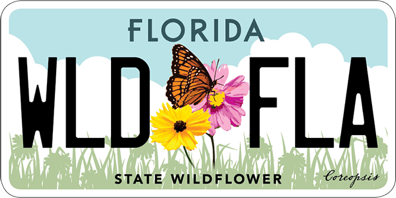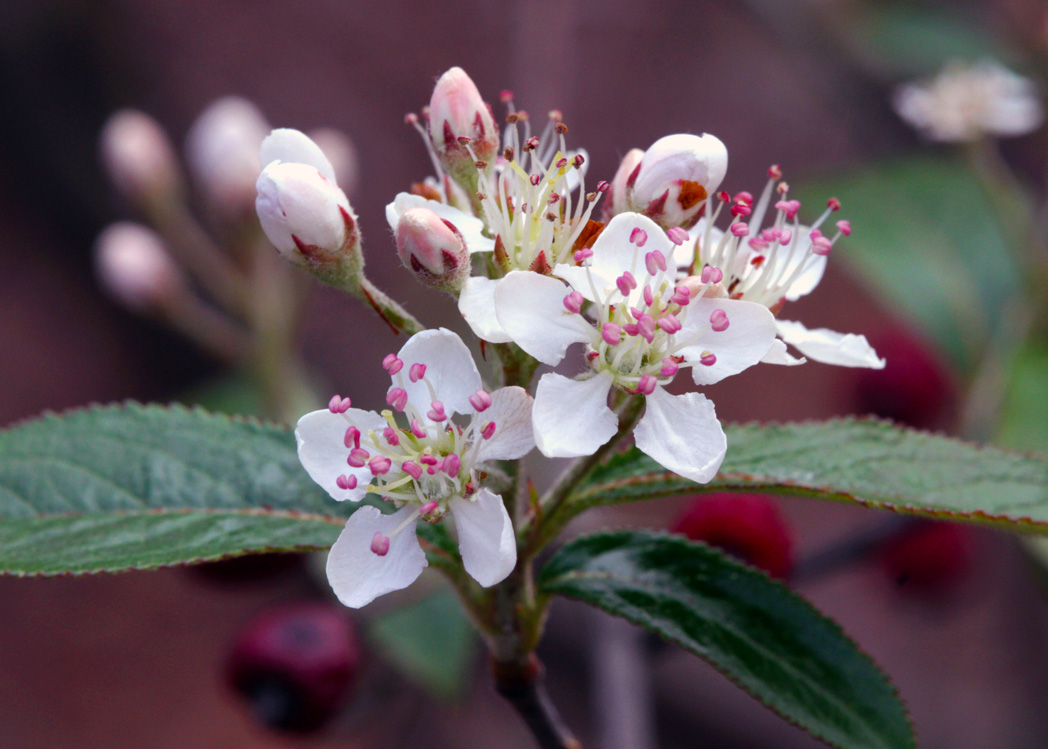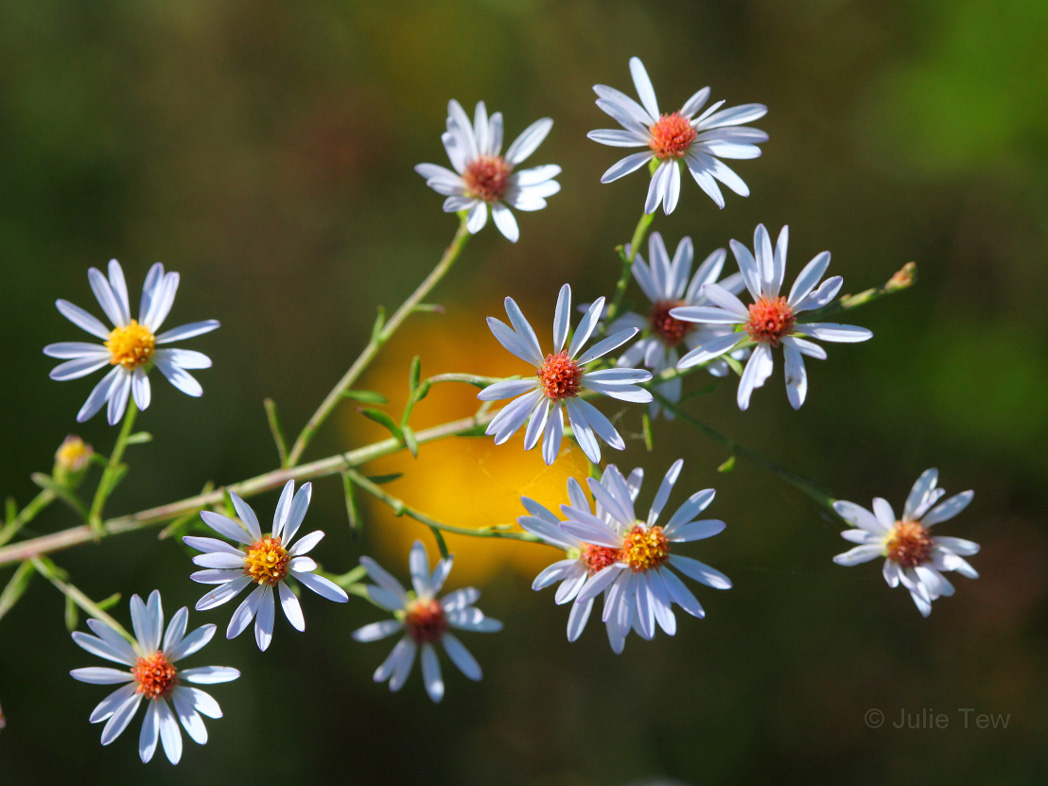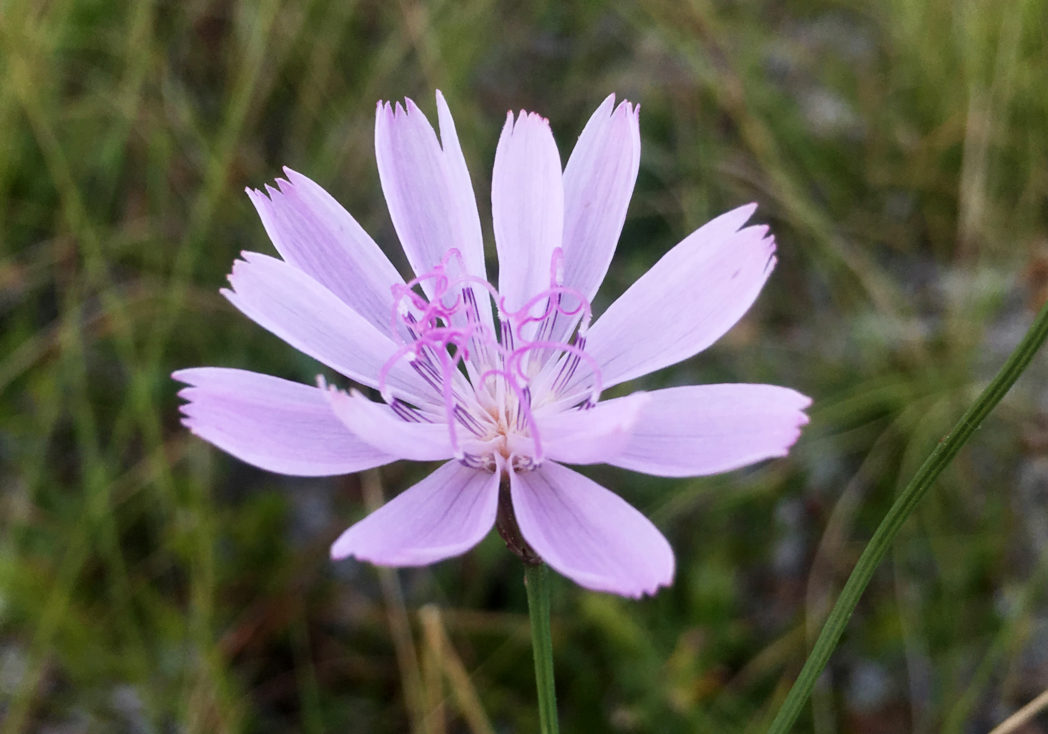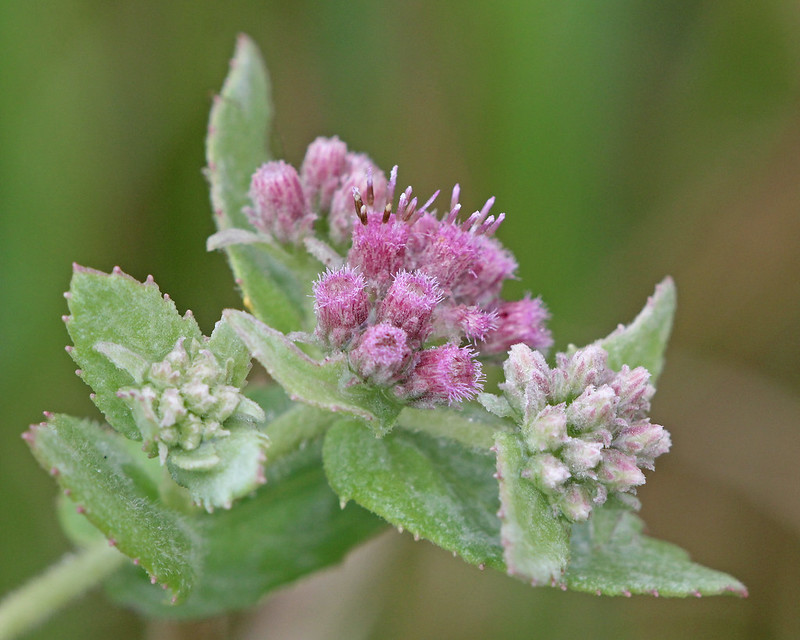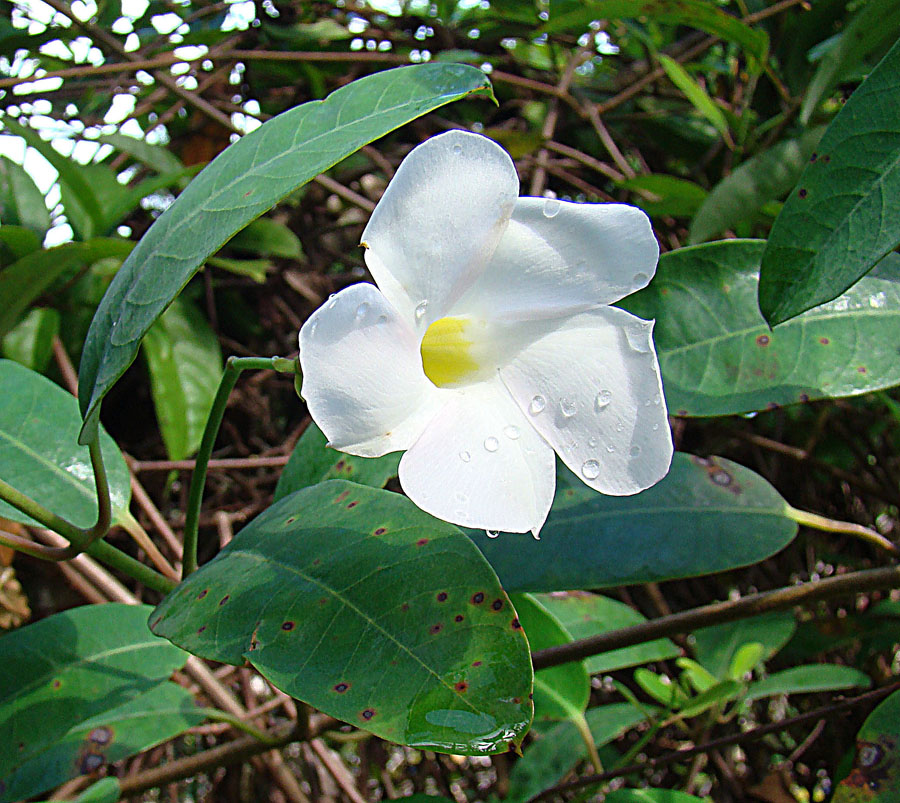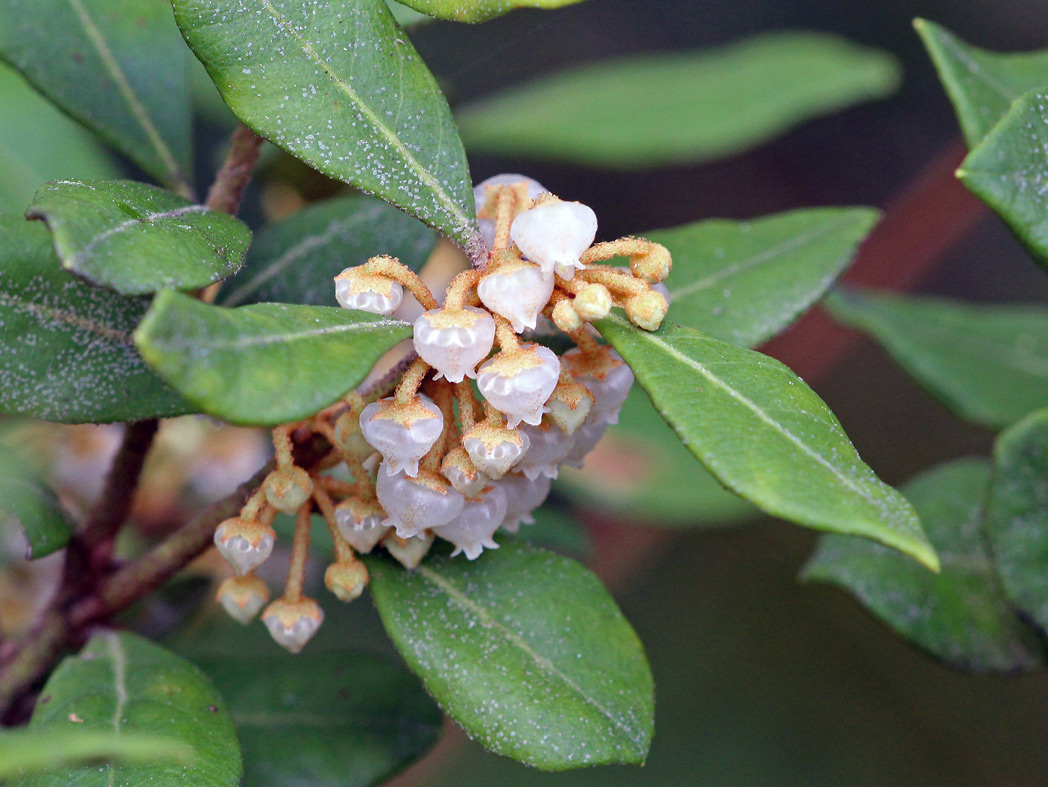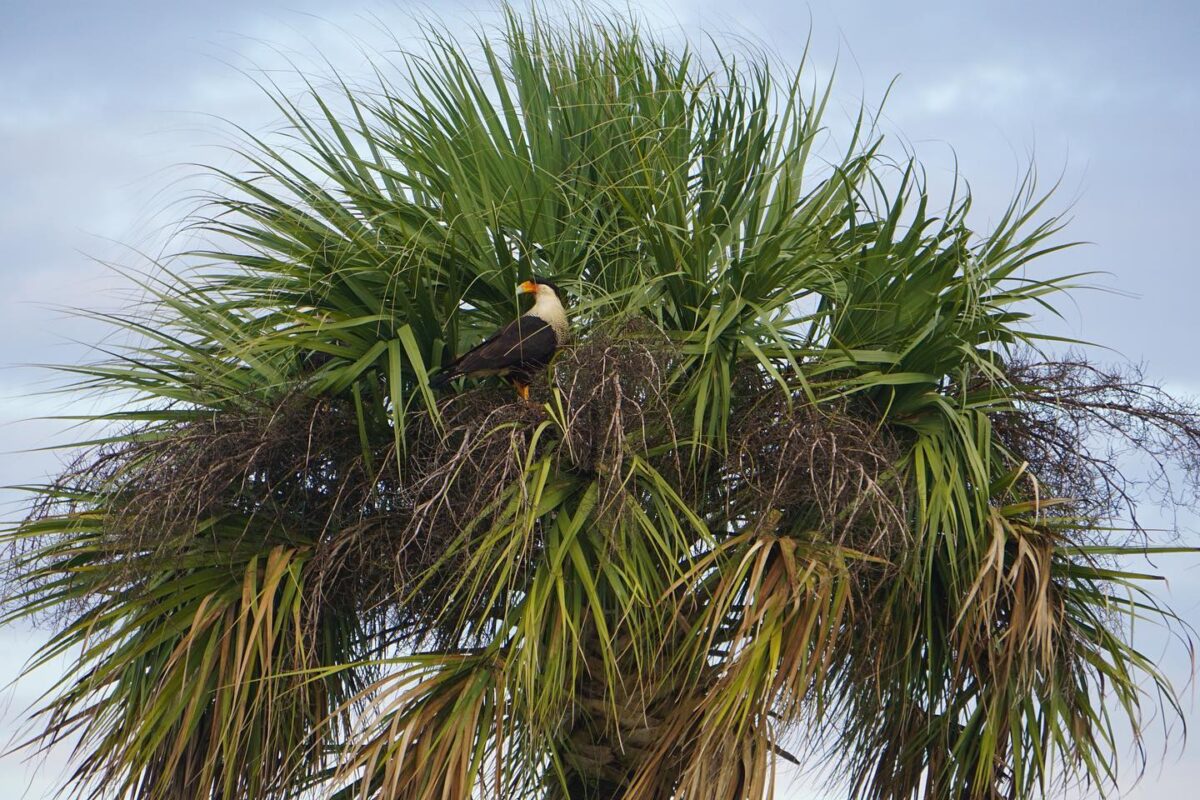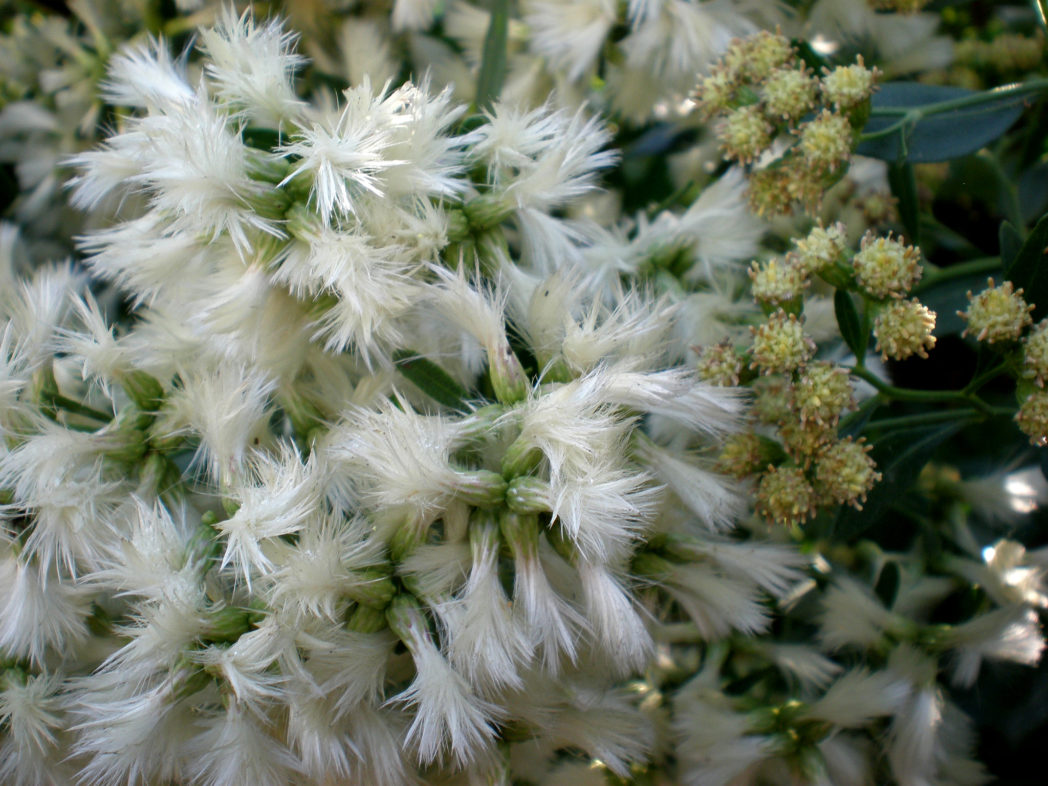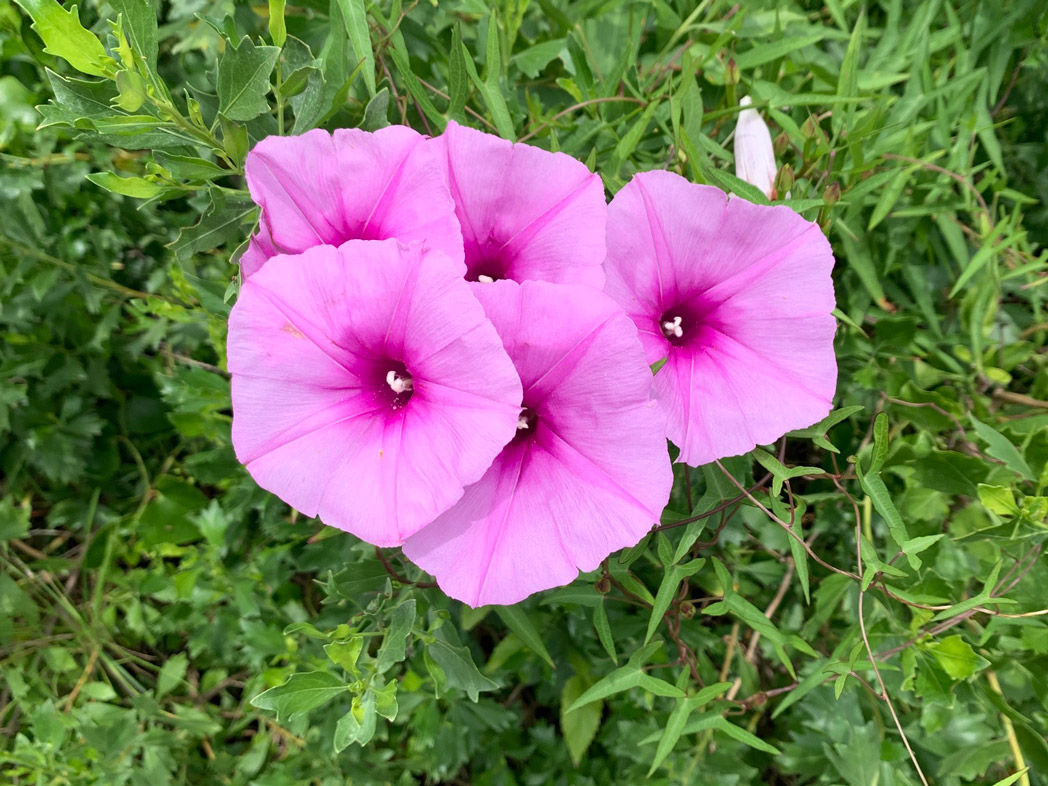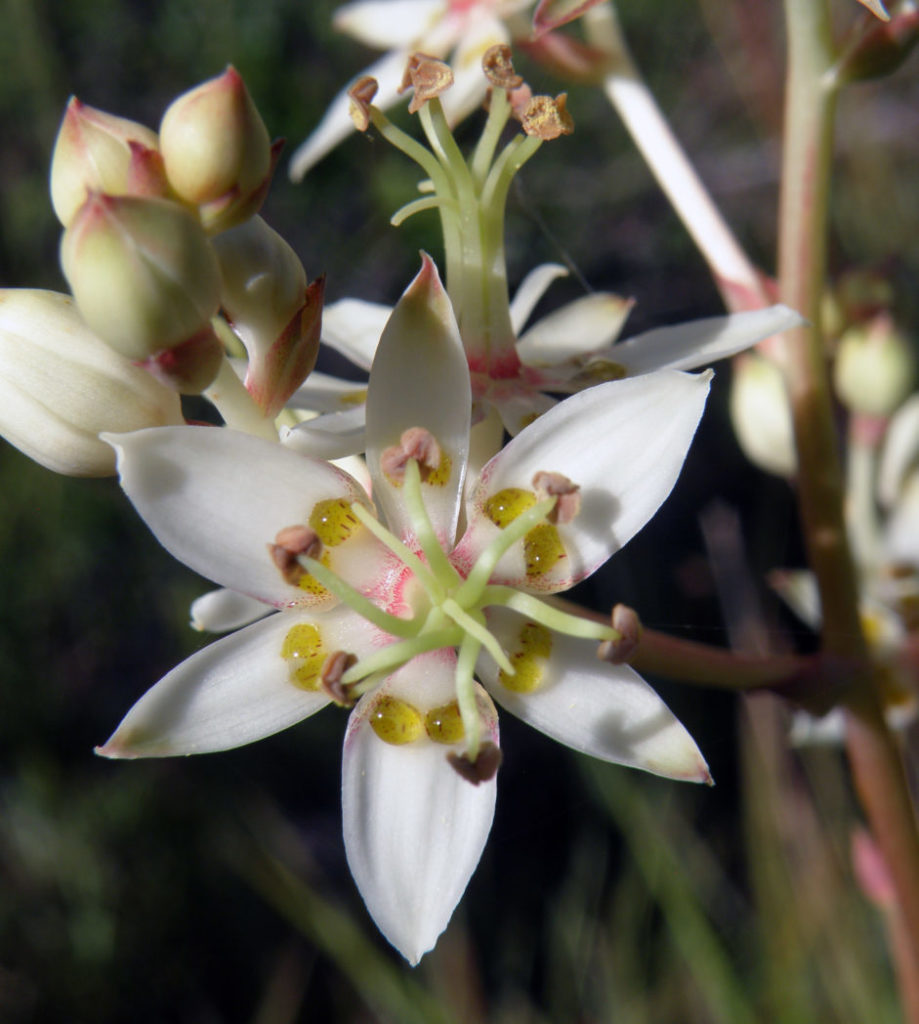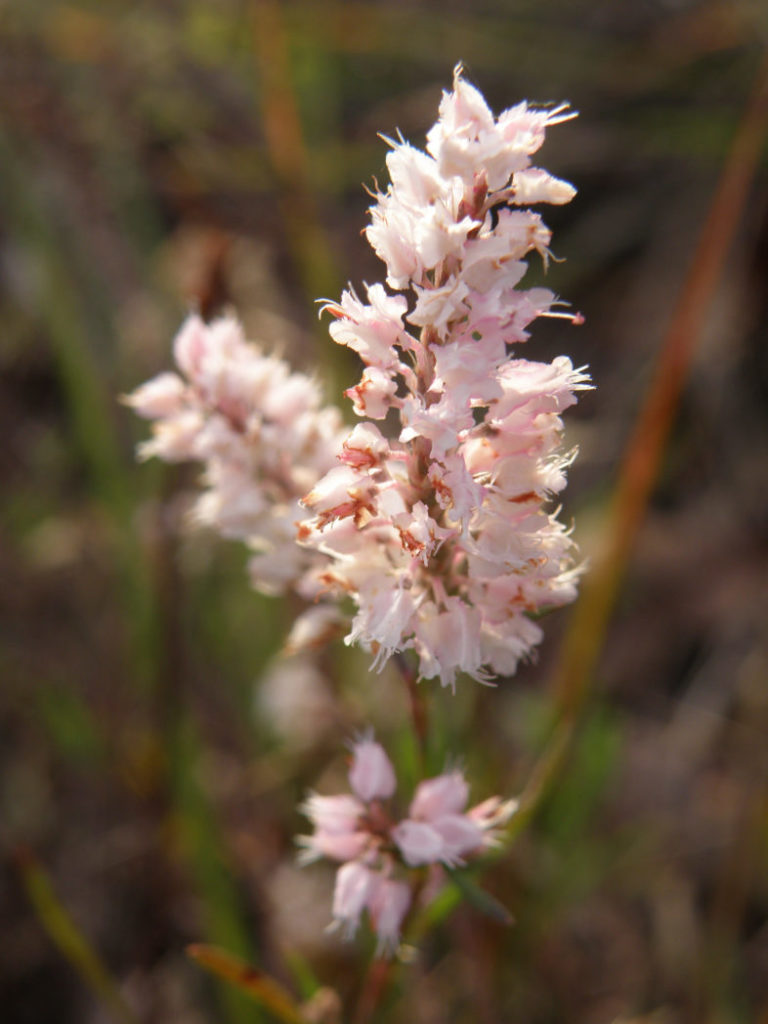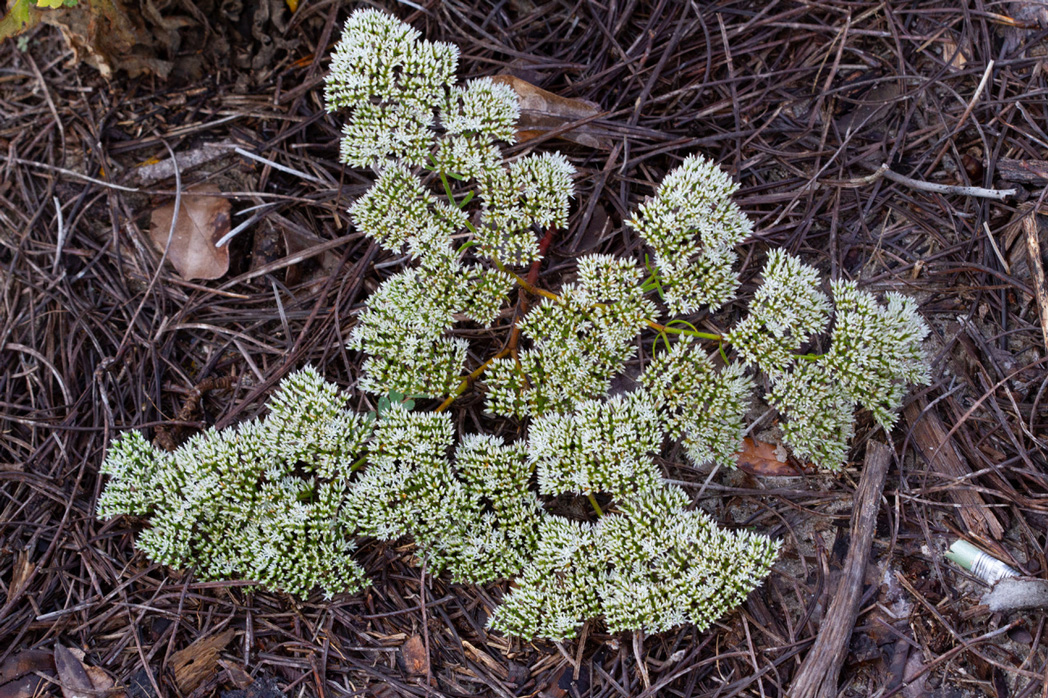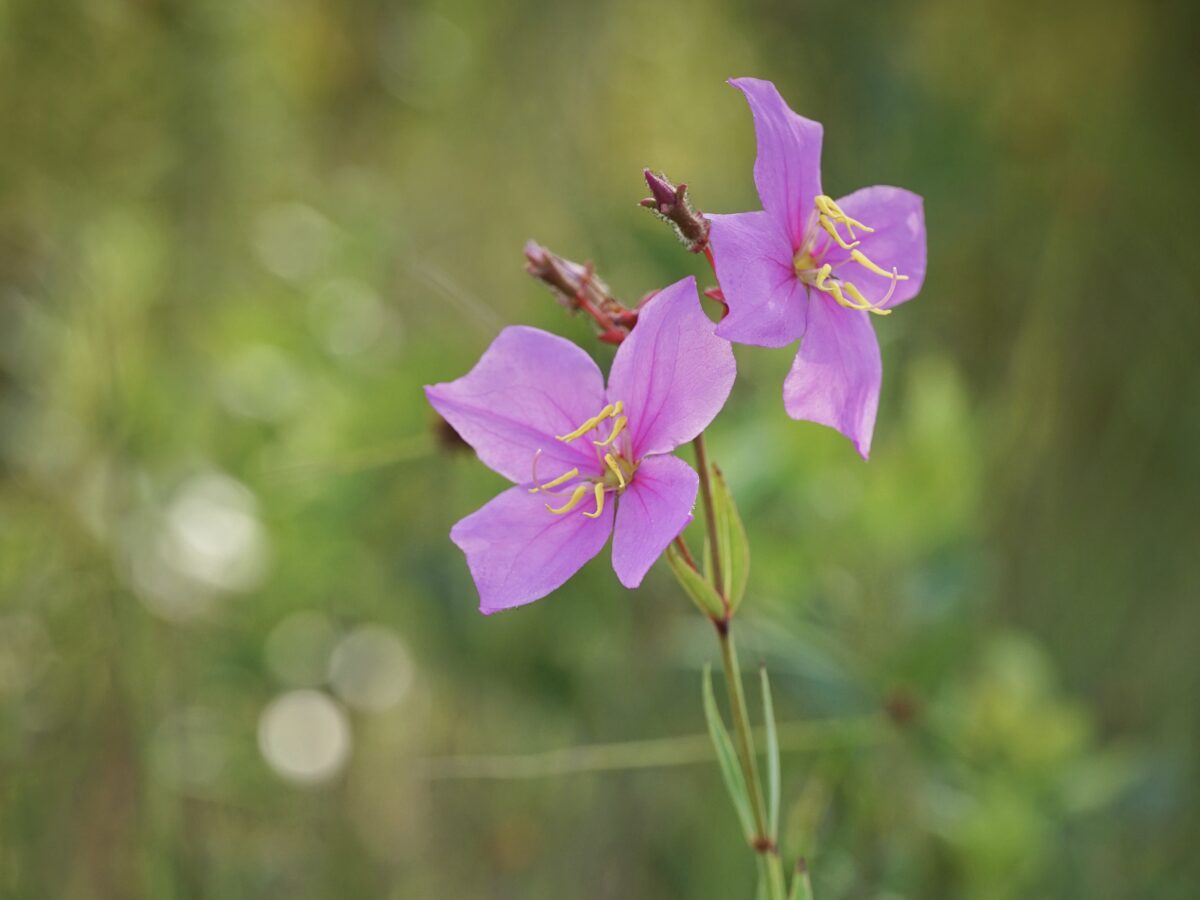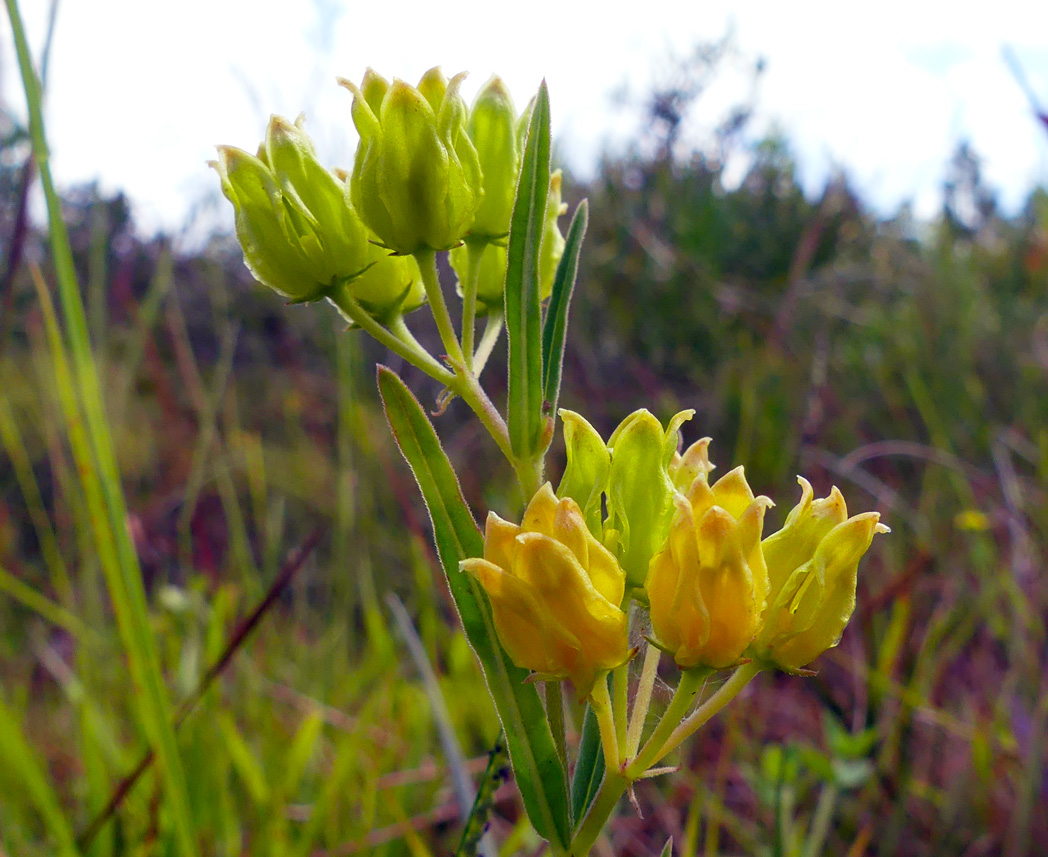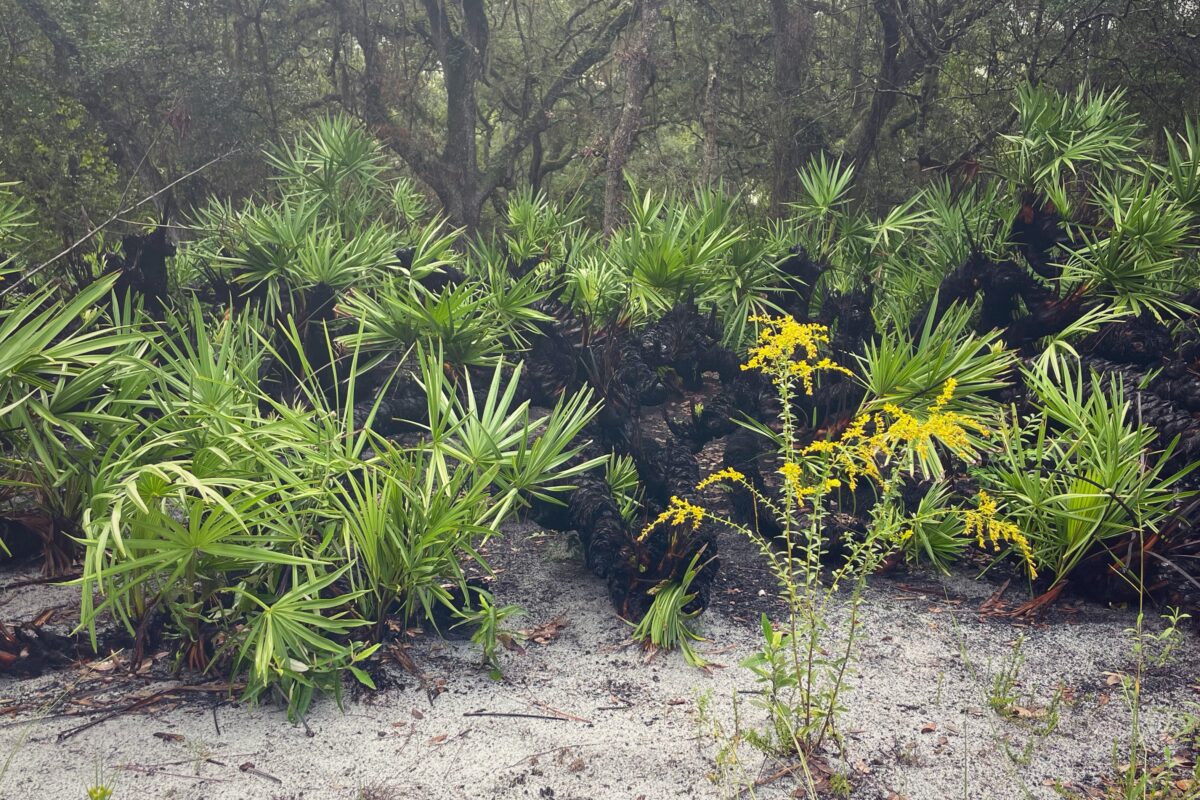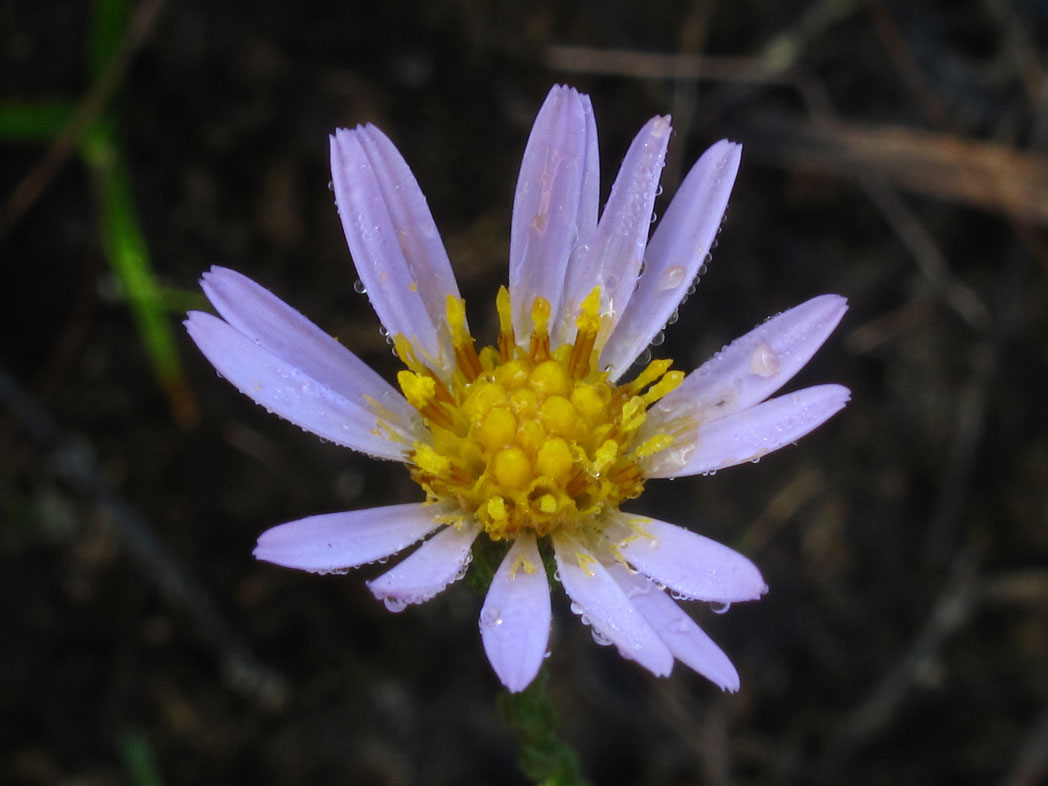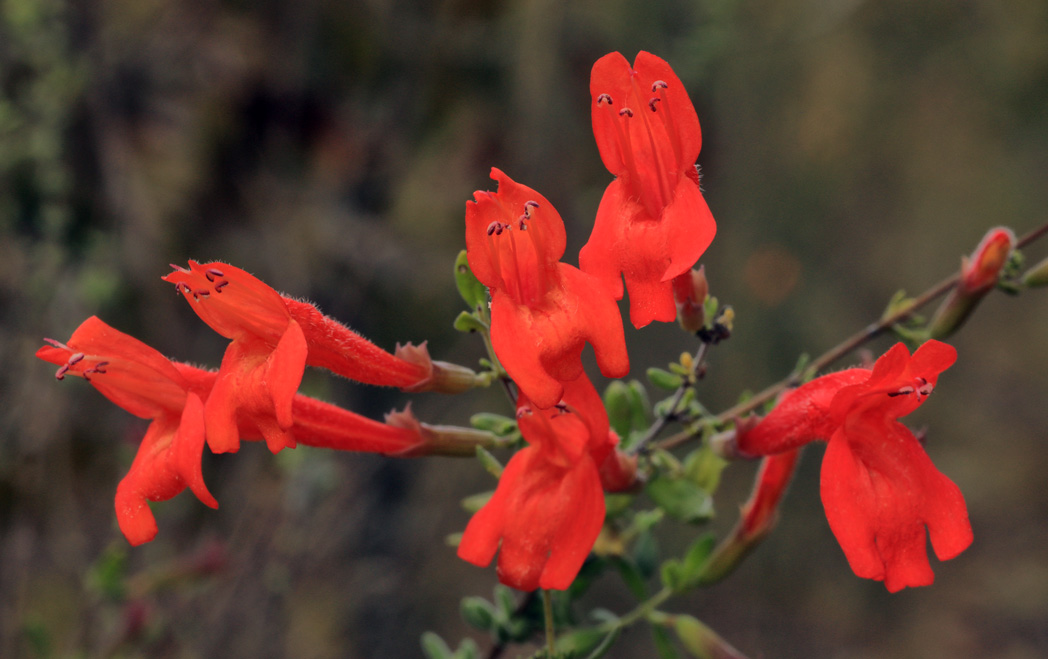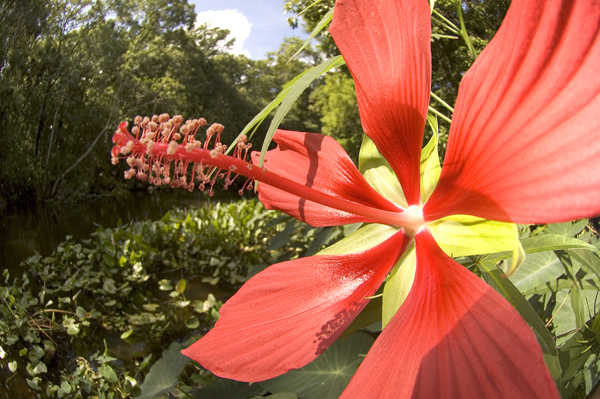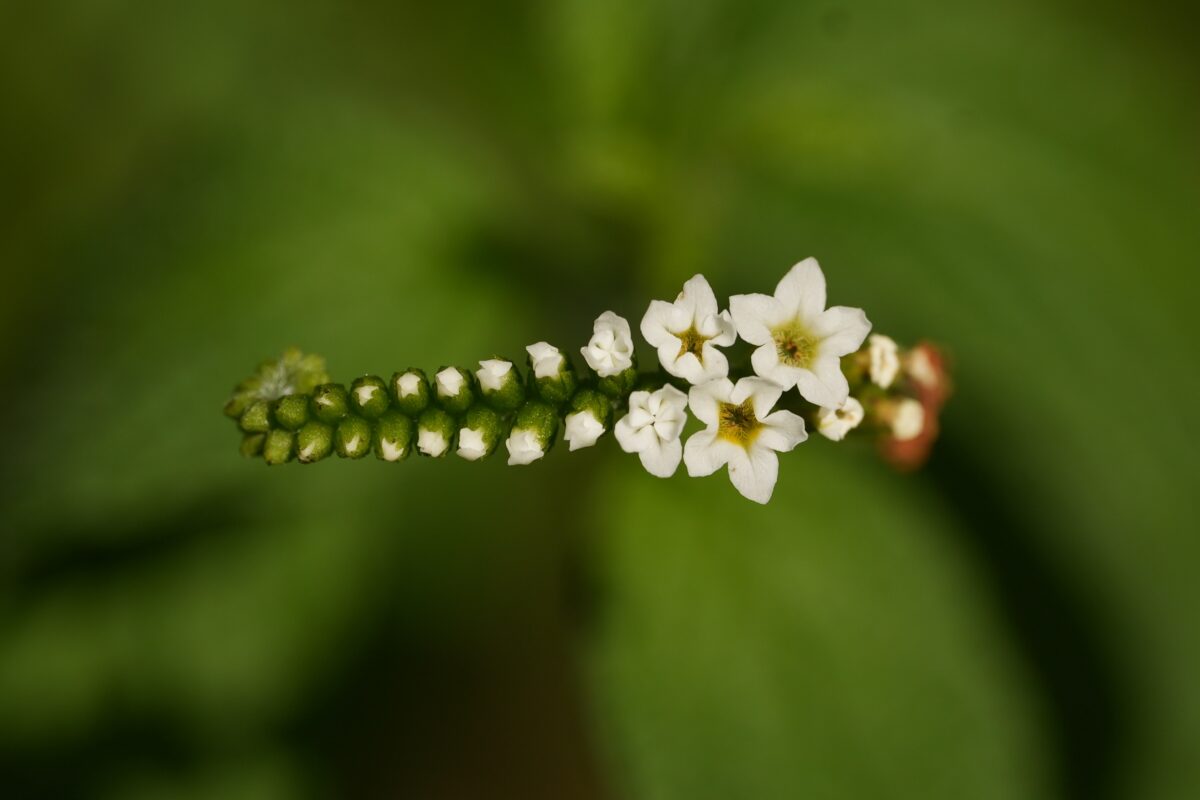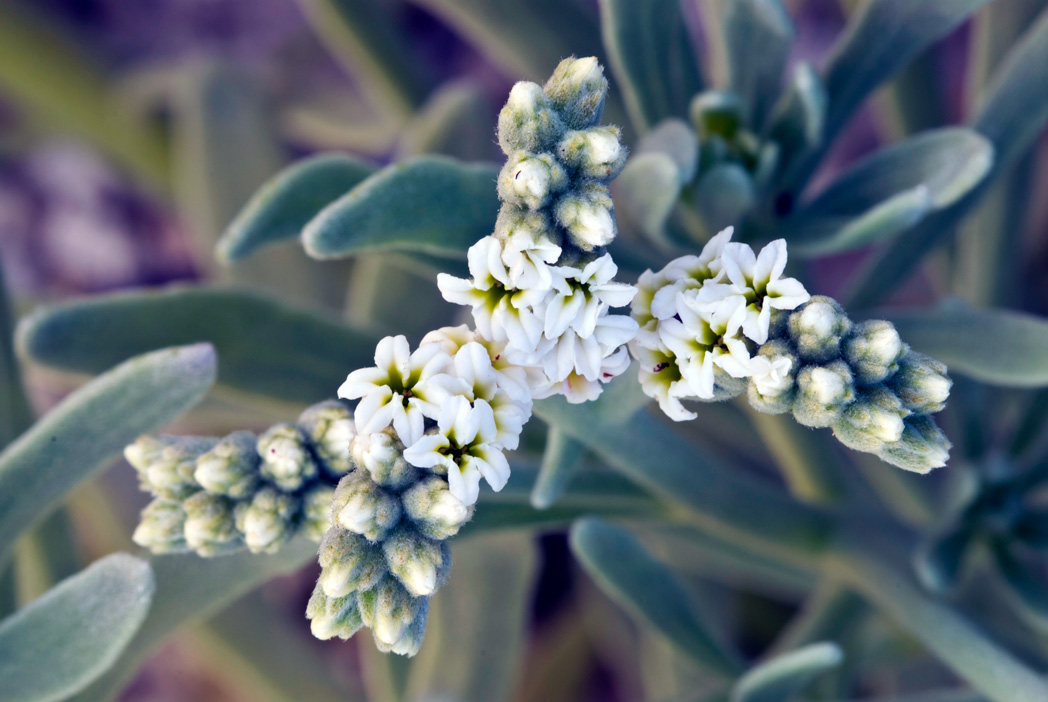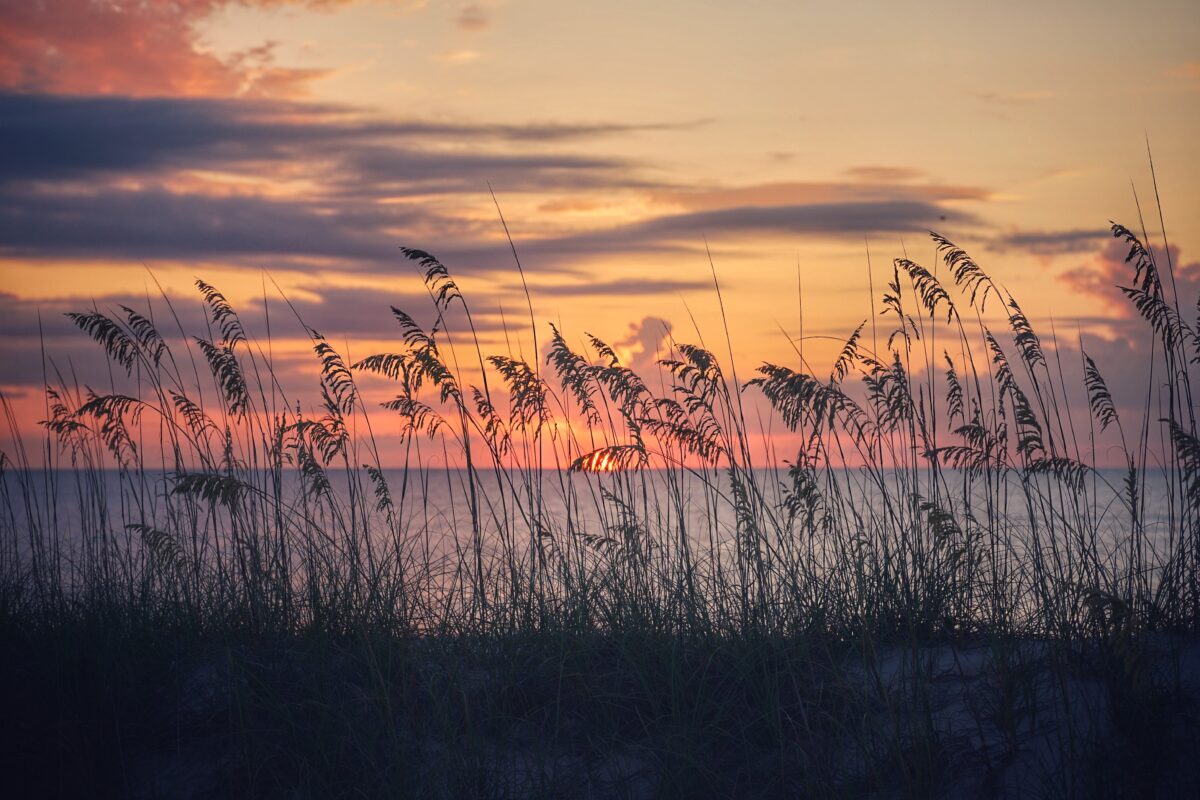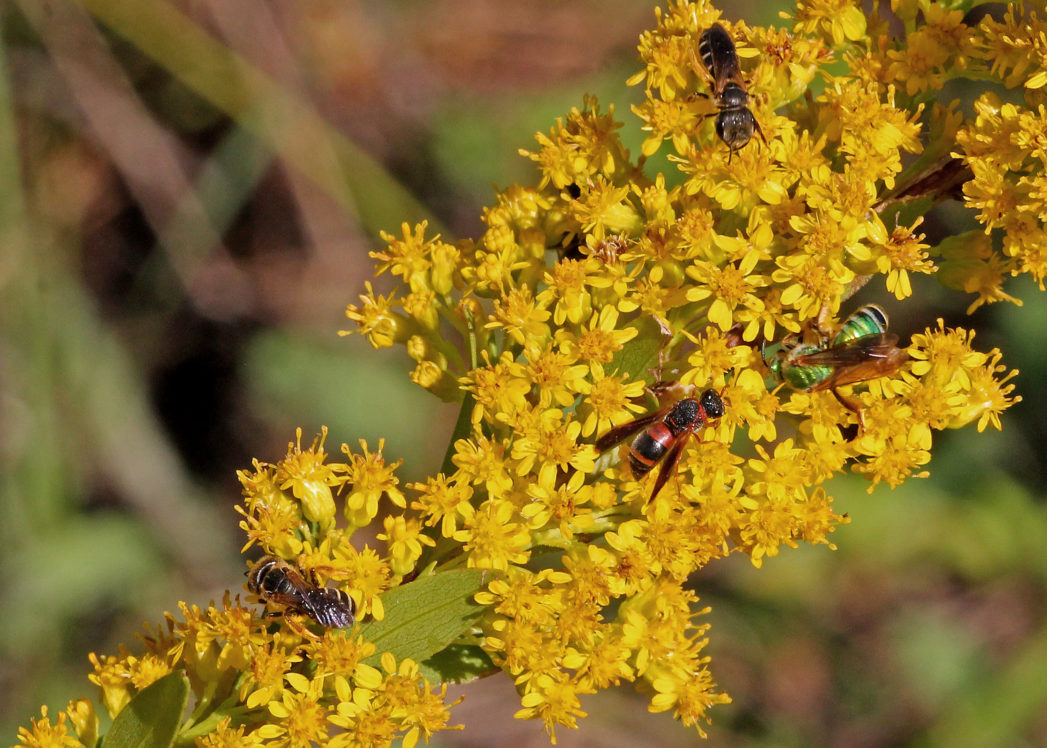Red chokeberry
Red chokeberry (Aronia arbutifolia) is a deciduous shrub found in moist to wet pine flatwoods and along wetland and swamp margins. In late winter and spring, the plant is covered in a profusion of showy, sweet-scented blooms that attract a variety of pollinators, especially bees. In summer, flowers give way to a bounty of berries that persist well into fall. Although birds don’t care much for them, they may be eaten by deer, rabbits and other small mammals. Humans can eat them, too, but their taste is bitter and acidic. They are best made into jam, jelly, pie or wine. The fruits are high are in antioxidants.
Rice button aster
Rice button aster (Symphyotrichum dumosum) is a profuse bloomer with small flowers that attract a plethora of pollinators including butterflies and native bees.
Rose-rush
Rose-rush (Lygodesmia aphylla) is a striking perennial wildflower that occurs naturally in sandy flatwoods, scrub, sandhills and pine barrens throughout most of Florida.
Rosy camphorweed
Rosy camphorweed (Pluchea baccharis) is a summer-blooming wildflower found in wet habitats throughout Florida. Its pink flowers are particularly attractive to small butterflies, bees and other dainty pollinators.
Rubbervine
Rubbervine (Rhabdadenia biflora) is an evergreen flowering vine with white to pinkish-white flowers that bloom spring through fall, but may bloom year-round if temperatures remain warm.
Rue anemone
Rue anemone (Thalictrum thalictroides) is a state-listed endangered species. Its dainty white flowers bloom in early spring and are gone by mid-summer.
Rusty lyonia
Rusty lyonia ( Lyonia ferruginea) is a long-lived evergreen flowering shrub, so named for the many rust-colored hairs that cover the plant’s leaves, stems and trunk.
Sabal palm
As one of our most ubiquitous native plants, it is easy to see why Sabal palm (Sabal palmetto) is Florida’s state tree. Also known as Cabbage palm, this evergreen fan palm occurs nearly throughout Florida.
Saltbush
Also known as Groundsel tree and Sea myrtle, Saltbush (Baccharis halimifolia) is a long-lived perennial shrub that typically blooms in fall. It occurs naturally in coastal uplands and dunes, along pond margins, and in ditches and disturbed areas. It is an evergreen in the southern part of the state, but can be deciduous in northern Florida.
Saltmarsh morning glory
Saltmarsh morning glory (Ipomoea sagittata) is a trailing perennial vine with showy pink blooms. The large nectaries and flowers attract many insects, but it is most visited by bees.
Sandbog deathcamas
Sandbog deathcamas (Zigadenus glaberrimus) is a poisonous wildflower found in the Panhandle. Its many star-shaped flowers are cream-colored with greenish-gold glands at the base of their petals. It
Sandhill wireweed
Also known as Largeflower jointweed, Sandhill wireweed (Polygonum nesomii) is a deciduous woody shrub that produces an abundance of spike-like flowering clusters. It is mostly a summer and fall bloomer, with October being its most abundant blooming time, but year-round blooms are not uncommon. Sandhill wireweed is endemic to Florida. It occurs nowhere else in the world.
Sandsquares
Sandsquares (Paronychia rugelii) is one of Florida’s most unique wildflowers because as its name implies, it has a square inflorescence! It blooms summer into early fall, attracting mostly small bees.
Savannah false pimpernel
Savannah false pimpernel (Lindernia grandiflora) is a low-growing, mat-forming wildflower found in moist pinelands, marshes and swamps. Its diminutive yet flamboyant flowers bloom year-round, peaking in spring. They attract small insects; however, they are primarily self-pollinated. The plant is also known as Blue moneywort and Angel’s tears.
Savannah meadowbeauty
Of Florida’s 10 native meadowbeauties (Rhexia genus), the Savannah meadowbeauty (Rhexia alifanus) stands among the tallest at around 4 feet. Its bright pink blooms can be seen rising up like flags from the shorter vegetation of the pine flatwoods, wet savannahs and roadside ditches. It is pollinated by bees through a unique strategy called buzz pollination!
Savannah milkweed
With its diminutive stature and greenish-yellow flowers, Savannah milkweed (Asclepias pedicellata) is oft overlooked in its native pineland and prairie habitats. It blooms late spring through fall, peaking in summer.
Saw palmetto
Saw palmetto (Serenoa repens) is an evergreen shrub found in scrub, pinelands, coastal hammocks, and dunes throughout Florida. Dr. Mark Deyrup of Archbold Biological Station calls it the “most amazing plant in Florida.” He has counted 311 species that use Saw palmetto, while many other species have documented interlocking relationships with it.
Scaleleaf aster
Scaleleaf aster (Symphyotrichum adnatum) is hardly noticeable when not in bloom. But in late fall and early winter, its copious periwinkle blooms make for a showy display.
Scarlet calamint
The brilliant red flowers of Scarlet calamint (Calamintha coccinea) offer a dramatic contrast against the backdrop of scrub, sandhill and coastal dunes where the plant naturally occurs. The long, nectar-rich flowers are particularly attractive to hummingbirds and large butterflies. They bloom in abundance in early spring and late fall, but may flower sporadically throughout the year. In peak bloom, a single plant may produce 100 or more flowers.
Scarlet hibiscus
Scarlet hibiscus (Hibiscus coccineus) has large, crimson blooms that attract hummingbirds, butterflies and other pollinators. They remain open for only one day, but the plant produces many flowers throughout the summer.
Scorpionstail
Scorpionstail ( Heliotropium angiospermum) is a shrub-like plant with unique white flowers that bloom year-round. Its nectar attracts a variety of butterflies including the Miami blue and Schaus’ swallowtail.
Sea lavender
Sea lavender (Heliotropium gnaphalodes) is an evergreen shrub found in dunes and thickets on the Atlantic coast of Central and South Florida. Its small but showy flowers emit a subtly sweet scent and attract many pollinators.
Sea oats
There is nothing more iconic to the Florida summer coastal scene than Sea oats (Uniola paniculata) swaying to the sea breeze in the dunes. The flowers of this tall and sprawling grass provide pollen to a variety of insects, and the seeds are eaten by beach mice, rabbits and birds.
Seaside goldenrod
Seaside goldenrod (Solidago sempervirens ) blooms in showy masses on dunes, in swales and brackish marshes, on sandy soils in coastal areas, and occasionally inland throughout the state.
